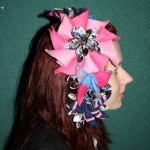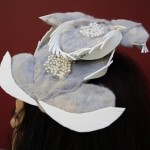Siobhan Cardow – Music Teacher
2.1 Learners’ Experiences
5.1 The Curriculum and 5.9 Improvement Through Self-Evaluation
With changes in SQA, the ukulele is now an approved instrument at National level. This is a new and exciting instrument which pupils enjoy playing and was introduced into schools across Scotland in August 2013. In the last year, I have attended a ukulele workshop at the Fringe Festival and expanded on my knowledge of SQA requirements whilst building upon my skills on this instrument at Scottish Association for Mucis Education (SAME) conferences and other CPD events, in order to effectively teach this instrument. The music department ordered a class set as part of the S1 and S2 Music courses and this has led to pupils performing on the ukulele at National 4/5 levels. It has become so popular in the department that the ukulele club is also running for the second year in a row. It provides pupils with the challenge and enjoyment of learning an instrument as well as the opportunity to become a further part of the school, meet young people from various year groups and work with others.










